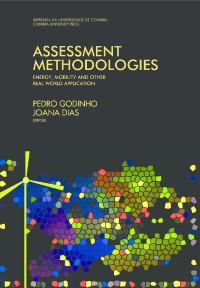Please use this identifier to cite or link to this item:
https://hdl.handle.net/10316.2/38157| DC Field | Value | Language |
|---|---|---|
| dc.contributor.author | Printz, Stephan | |
| dc.contributor.author | Vossen, René | |
| dc.contributor.author | Jeschke, Sabina | |
| dc.date.accessioned | 2015-11-27T16:54:07Z | |
| dc.date.accessioned | 2020-09-10T16:36:31Z | - |
| dc.date.available | 2015-11-27T16:54:07Z | |
| dc.date.available | 2020-09-10T16:36:31Z | - |
| dc.date.issued | 2015 | - |
| dc.identifier.isbn | 978-989-26-1038-2 | |
| dc.identifier.isbn | 978-989-26-1039-9 (PDF) | |
| dc.identifier.uri | https://hdl.handle.net/10316.2/38157 | - |
| dc.description.abstract | Strategic investment decisions are characterized by high innovation potential and long term effects on the competitiveness of enterprises. Due to uncertainty and risk in this complex decision-making situation, the need for well-structured support activities arises. A method that considers cost and the long-term added value is the cost-benefit effectiveness estimation. One of those methods is the “profitability estimation focused on benefits – PEFB”-method (trans. Savelsberg 2008) developed at the institute of management cybernetics at RWTH Aachen University in 2000, by Weydandt in the course of his PhD. This method copes with the challenge of strategic investment decision by integrating long term non-monetary aspects as well as by mapping the chronological sequence of an investment within the organisation´s target system. For that reason, this method is characterised as a holistic approach for the evaluation of costs and benefits of an investment. In applying this participation-oriented method in business environment, the overall interdisciplinary investment teams were formed by more than 500 participants. Due to feedback of these participants within accomplished assessments, a survey with 110 participants was conducted focussing on the statements of verbal probability. The results of the survey identified a structural deficit in the conception of the methodology regarding the estimation of probabilities due to personal affection. This paper describes the well-structured PEFB-method to reduce risk and uncertainty in decision making progress. Moreover, the results of the survey concerning the bias due to personal affection within the evaluation process are addressed. Finally, to achieve more accurate PEFB-method results, recommendations for an adaption of the PEFB are given. | eng |
| dc.language.iso | eng | - |
| dc.publisher | Imprensa da Universidade de Coimbra | por |
| dc.relation.ispartof | http://hdl.handle.net/10316.2/38126 | por |
| dc.rights | open access | - |
| dc.subject | Multi-Criteria Decision | eng |
| dc.subject | Cost-Benefit Analysis | eng |
| dc.subject | Risk and Uncertainty Analysis | eng |
| dc.subject | Profitability Estimation Focused on Benefits | eng |
| dc.subject | PEFB-method | eng |
| dc.title | Adaption of the profitability estimation focused on benefits due to personal affection | por |
| dc.type | bookPart | por |
| uc.publication.firstPage | 249 | - |
| uc.publication.lastPage | 263 | - |
| uc.publication.location | Coimbra | por |
| dc.identifier.doi | 10.14195/978-989-26-1039-9_11 | - |
| uc.publication.digCollection | PB | por |
| uc.publication.orderno | 11 | - |
| uc.publication.area | Ciências Sociais | por |
| uc.publication.bookTitle | Assessment methodologies: energy, mobility and other real world application | - |
| uc.publication.manifest | https://dl.uc.pt/json/iiif/10316.2/38157/213111/manifest?manifest=/json/iiif/10316.2/38157/213111/manifest | - |
| uc.publication.thumbnail | https://dl.uc.pt/retrieve/11199078 | - |
| uc.publication.parentItemId | 54536 | - |
| uc.itemId | 70660 | - |
| item.grantfulltext | open | - |
| item.fulltext | With Fulltext | - |
| Appears in Collections: | Assessment methodologies: energy, mobility and other real world application | |
Files in This Item:
| File | Description | Size | Format | |
|---|---|---|---|---|
| adaption_of_the_profitability_estimation_focused_on_benefits_due_to_person_al_affection.pdf | 1.03 MB | Adobe PDF |  |
Items in DSpace are protected by copyright, with all rights reserved, unless otherwise indicated.
